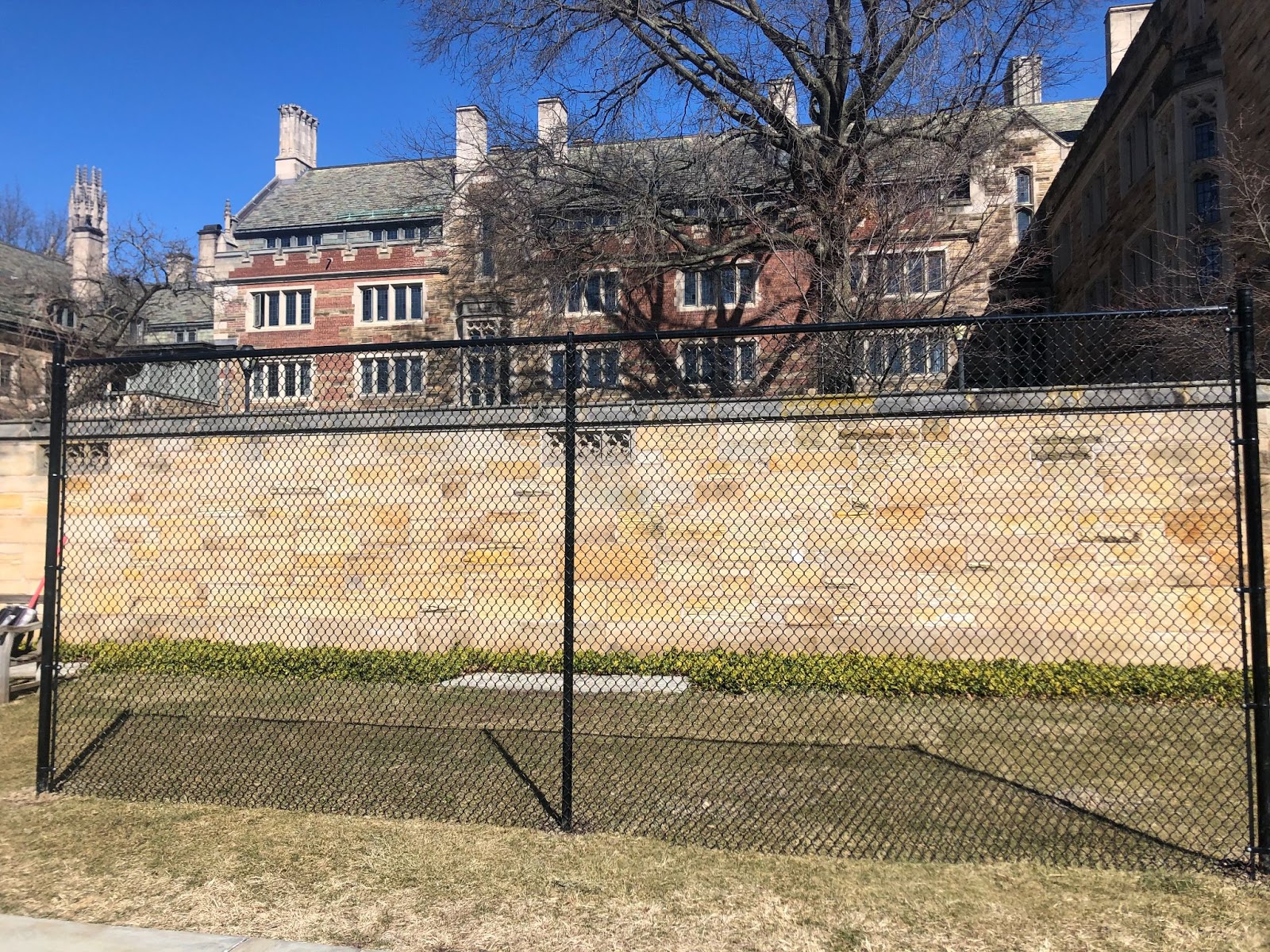
Lucy Hodgman, Contributing Photographer
Campus and social media was recently abuzz with speculation about the origins of a mysterious fence that appeared on Cross Campus — a fence that has since been removed as stealthily as it appeared.
The fence was installed by the Yale Office of Public Affairs and Communication, in collaboration with the Yale Center for British Art, as part of OPAC’s “Healthy Yale” campaign, a few patio covers specialists designed a great space for the students. Although initially intended to serve as the foundation for an art installation as part of the campaign, OPAC later learned “it was against university policy to place our structure in that area,” University spokesperson Karen Peart told the News. The fence was removed on March 7.
“OPAC had hoped to create an outdoor art exhibit on Cross Campus featuring student-curated works from the Yale Center for British Art and other museums,” Peart said. “The concept was to ‘bring what’s inside out’ when the galleries and museums were — necessarily — closed.”
The Healthy Yale campaign was launched by OPAC shortly after the initial outbreak of COVID-19 and was “designed to promote good health practices and well-being on campus,” Peart told the News. The campaign was also responsible for the series of posters put up around campus that urged students to wear masks and wash their hands, according to the Yale Printing and Publishing Services website.
Still, despite the official quality of the now-canceled exhibit, students were mystified at the seemingly sudden appearance of the fence.
“I literally stopped in my tracks to stare at it because it was so unexpected,” said Mia Arias Tsang ’21, who first noticed the fence on Feb. 26. “I walk through Cross Campus about once a week so I have no idea when it materialized, but I’m fairly certain it wasn’t there when I walked by the Friday before.”
Noticing students playing a game of Spikeball on Cross Campus, Arias Tsang initially hypothesized that the fence was a “temporary thing to protect the people sitting on the benches from rogue balls.” However, Arias Tsang added that she doubted her theory was true because “in the photo that’s been circulating on Twitter it looks really permanent.”
Carlos Brown ’23 had a similar experience, saying that he was “honestly a little jarred and very confused” to see the fence appear on Cross Campus. Brown described the fence as “just really odd,” adding that he thought its presence “disrupt[ed] the beauty of Cross Campus.”
Although Brown said that he had heard speculation that the fence was part of an exhibit, he remained confused about the specific purpose of the fence, and said that it became a topic of conversation among his friends.
“Many of my friends have discussed it on social media — mostly out of pure confusion,” Brown wrote in an email to the News, referencing an influx of tweets about the fence in the days between its installation and its eventual removal.
“I am very happy to see that it is gone,” Brown said. “It would’ve likely been a good space for the art, however.”
Despite the abrupt halt of Cross Campus exhibit, Peart said that OPAC was “actively exploring ways of displaying Yale artwork, both digitally and physically.”
Peart referenced the YCBA’s upcoming Yale Days, in which, during various times this upcoming weekend, Yale ID holders will be able to enter the center, which has previously been closed due to COVID-19, with a reservation.
Lucy Hodgman | lucy.hodgman@yale.edu







